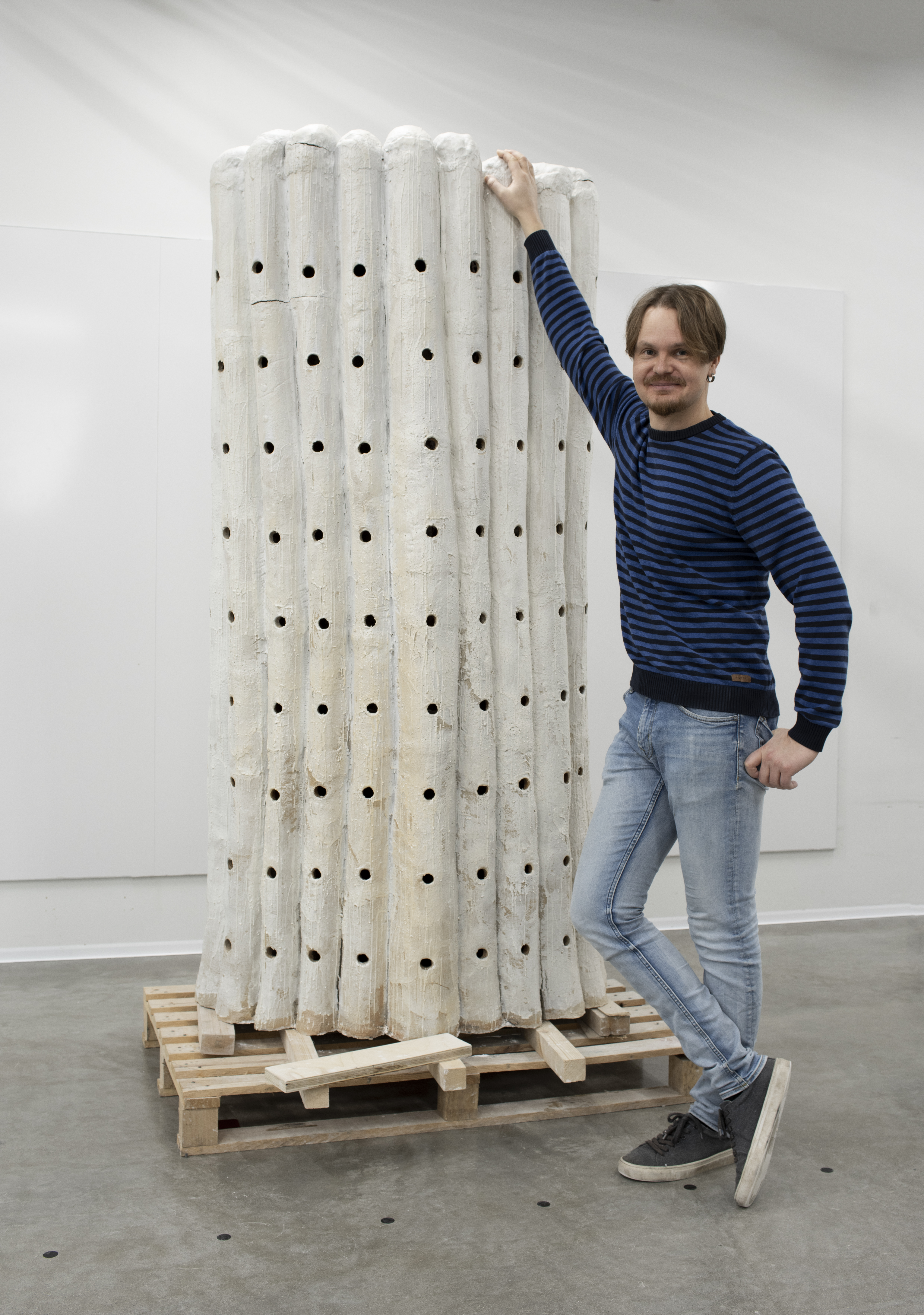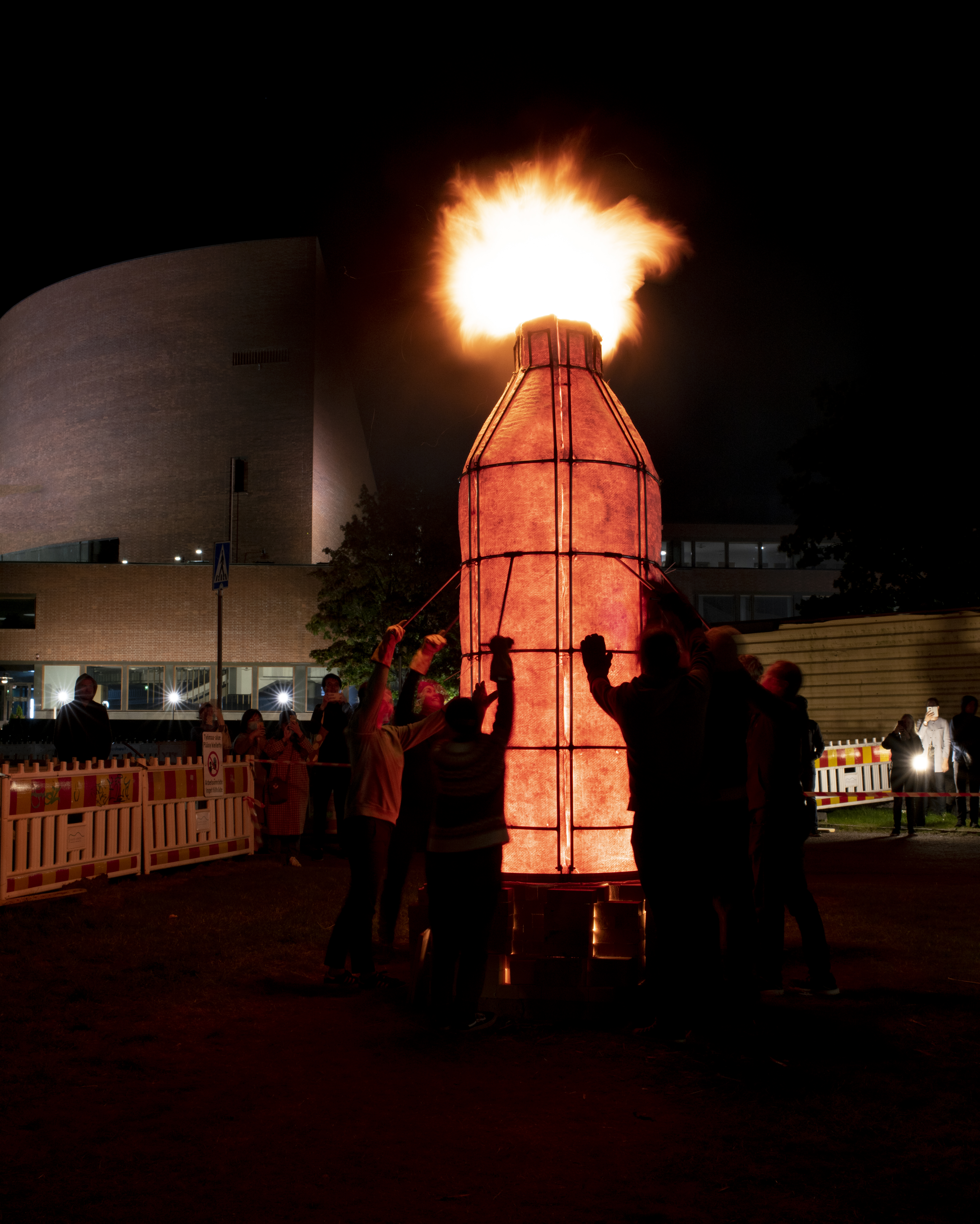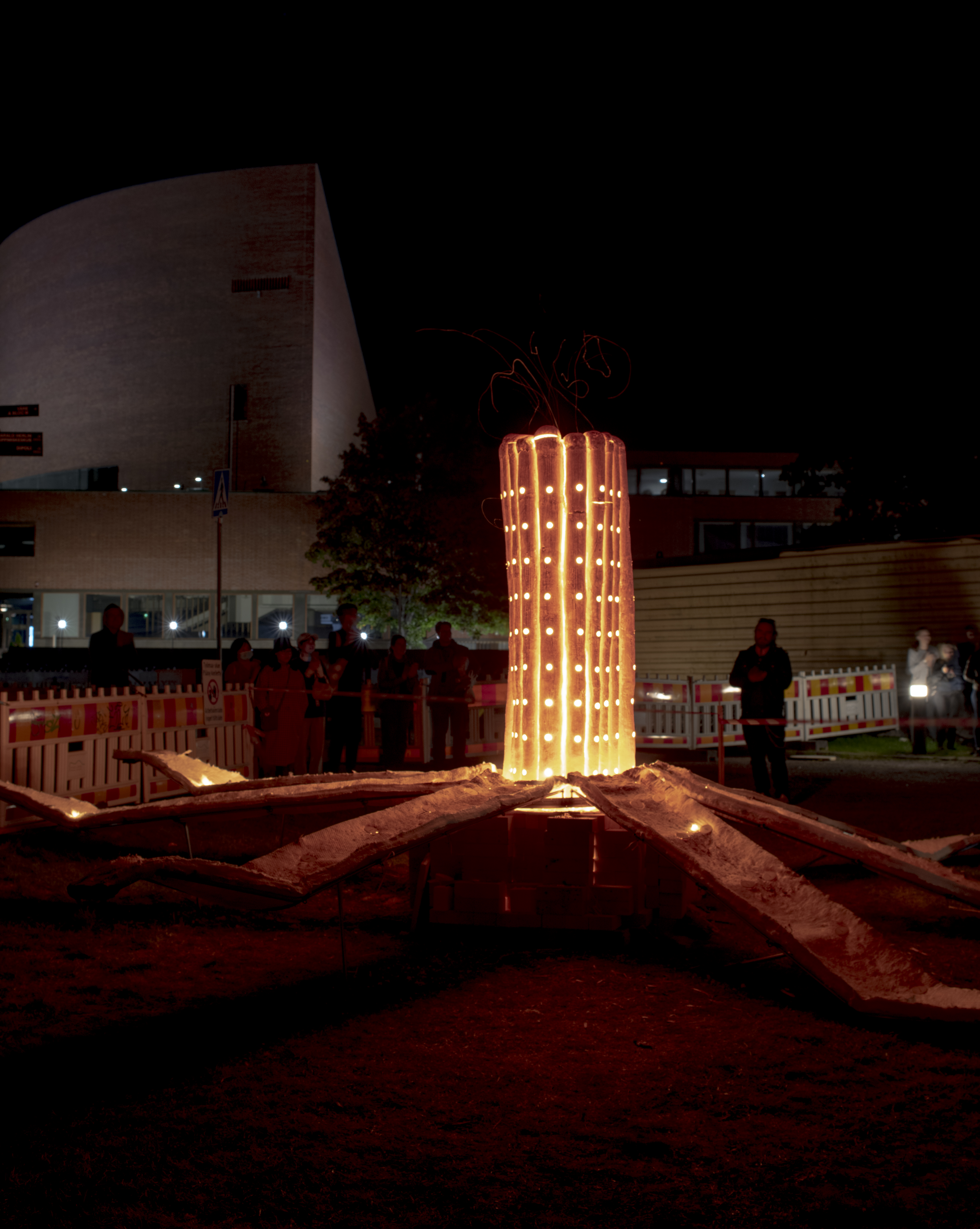Ceramic Handbook
Niko Mankinen

Photograph by Anne Kinnunen
Who are you and what are you studying?
I am interested in art and materials and things done within the Contemporary Design program. I’m finalising my studies.
Do you see yourself as an artist, craftsperson or designer? Something else?
It has fluctuated during this study, and it is possible that it may vary in the future, but at the moment I am particularly interested in ceramics as a sculpting tool. So I don’t feel like I’d use the word ‘Potter’ as it’s called in English. After all, that word is completely missing from Finnish language.
At what stage are your studies?
The physical part of my thesis culminated in September and the written part is under construction. Other studies are starting to be finished. My intention is to be completed in the spring of 2021.
How did you end up working with clay?
For the very first modular bachelor course, I chose a short workshop session on ceramics and liked it immediately. After that, I went back to ceramics time and time again and at some point it became my main material and actually the direction throughout my studies.
Do you only work with clay?
I am interested in a wide variety of material-based activities, but ceramics is such a multidimensional field of materials, methods, techniques, and expression that it does require the familiarity that I am currently doing here.
What project are you currently working on?
I worked on a fire sculpture project with varying intensity for about a year. Recently I passed the physical work and now I am working away at the written part of the thesis. In addition to my degree, my gaze is already on new jobs.
What are you researching in the project? What inspired it?
I study fire sculpture in the context of place-based art. I mirror our sculpture of fire through place-specific art that has changed over the decades and has been covered in various academic publications, but also subjective definitions. What place-basedness consists of and what it means in this case. I have always been interested in microhistory and the history of places and the stories and events associated with them, but I only became aware of the connection between these things during the project. Common stories, events, and objects create meanings and attachments to places. Therefore, I would have wished that my work could have remained in place, reminiscent of its birth and event, which many campus users witnessed in some way. The work would also have served as a concrete expression of the collective memory of Aalto ARTS’ ceramics community.
What technique do you use? Why?
The fire sculpture was built on-site with coarse Raku clay and brushed casting clay on the surface. The work was fired with wood and lasted about 15 hours. During the firing, the sculpture is large, dries quite quickly and the temperature fluctuations due to the opening of the oven is so drastic that manual construction and the use of the roughest possible clay are necessary.
What have been the biggest challenges and surprises in the process?
In such a long project, the hardest part has been maintaining my own enthusiasm. At times, the work has been a mere accomplishment devoid of shouts of joy. The biggest single surprise in the process was that even though the road was sometimes quite rocky and there was extra work for several factors, everything in the construction and burning phase eventually went according to plan, i.e. better than I dared to dream.
What do you want to work on in the future?
Absolutely ceramic art, but I've noticed over the years in our school's ceramic workshop that I enjoy communal vigorous activity and the fact that people are willing to help each other and also to ask me for help, so I would like to include this aspect in the post-graduation life and to have some kind of community element. Whether it’s teaching or just sharing a workspace, I don’t know yet


Photographs by Anne Kinnunen